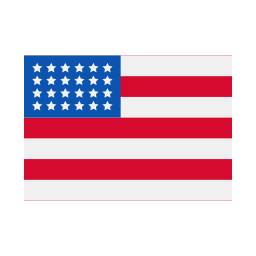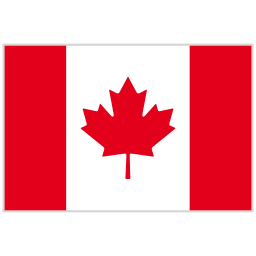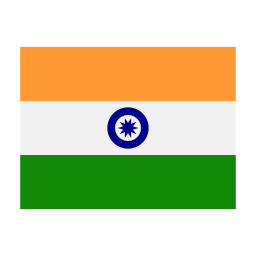COLOMBIA – GENERAL INFORMATION
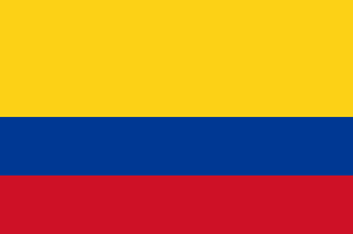
GEOGRAPHY
The geography of Colombia is characterized by containing five main natural regions that present their own unique characteristics, from the Andes mountain range region shared with Ecuador and Venezuela; the Pacific Ocean coastal region shared with Panama and Ecuador; the Caribbean Sea coastal region shared with Venezuela and Panama; the Llanos (plains) shared with Venezuela; to the Amazon Rainforest region shared with Venezuela, Brazil, Peru and Ecuador. Colombia is the only South American country which borders both the Atlantic and Pacific Oceans. Colombia is bordered to the east by Venezuela and Brazil; to the south by Ecuador and Peru; to the north by Panama and the Caribbean Sea; and to the west by Ecuador and the Pacific Ocean.
HISTORY
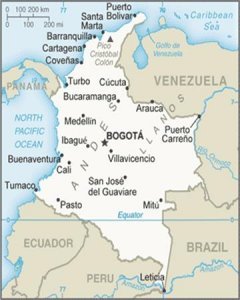
The territory of what is now Colombia was originally inhabited by indigenous peoples including the Muisca, Quimbaya, and Tairona. The Spanish arrived in 1499 and initiated a period of conquest and colonization ultimately creating the Viceroyalty of New Granada (comprising modern-day Colombia, Venezuela, Ecuador, north-western Brazil and Panama), with its capital at Bogotá. Independence from Spain was won in 1819, but by 1830 “Gran Colombia” had collapsed with the secession of Venezuela and Ecuador. What is now Colombia and Panama emerged as the Republic of New Granada. The new nation experimented with federalism as the Granadine Confederation (1858), and then the United States of Colombia (1863), before the Republic of Colombia was finally declared in 1886. Panama seceded in 1903. Colombia was the first constitutional government in South America, and an important promoter of the Pan American organizations, initially through the Congress of Panama and later as founder of the Organization of American States. The Liberal and Conservative parties, founded in 1848 and 1849, are two of the oldest surviving political parties in the Americas.
THE PEOPLE
About 60% of Colombia’s population are mestizos, and some one fifth are of European descent. Indigenous peoples account for only about 1%. About 15% of the people are of mixed African and European descent.
SOCIAL CONVENTIONS
Men shake hands with direct eye contact. While shaking hands, use the appropriate greeting for the time of day: “buenos dias” (good day), “buenas tardes” (good afternoon), or “buenas noches” (good evening/night). Women often grasp forearms rather than shake hands.
LANGUAGE
The official language of Colombia is Spanish, of which Colombian Spanish is the local variety. The indigenous languages spoken in Colombia are also official in the territories in which they are spoken.
GOVERNMENT
Colombia is governed under the constitution of 1991 as amended. The president, who is elected for a four-year term, may serve two terms. The legislature, subservient to the president, consists of a 102-seat Senate and a 166-seat House of Representatives. The members are popularly elected for four-year terms. Administratively, Colombia is divided into 32 departments and the capital district.
TIME ZONE
UTC – 5.
ELECTRICITY
Standard current is 110 volts, 60 Hertz.
CLIMATE
The Climate of Colombia is characterized for being tropical and isothermal as a result of its geographical location near the Equator presenting variations within five natural regions and depending on the altitude, temperature, humidity, winds and rainfall. Each region maintains an average temperature throughout the year only presenting variables determined by precipitation during a rainy season caused by the Intertropical Convergence Zone.
The diversity of climates in Colombia is characterized for having tropical rainforests, savannas, steppes, deserts and mountain climate, this last one further subdivided into tierra caliente (hot land) tierra templada (temperate land) tierra fria (cold land), tierra helada (frozen land) and Páramo.
Clothes to Wear:
Lightweight clothes with waterproofs during the rainy season in coastaland northern areas. Medium- to heavyweights are needed in upland and mountainous areas.
LOGISTICAL
Entry & Exit Requirements:
All U.S. citizens who are not also Colombian citizens must present a valid U.S. passport to enter and depart Colombia, and to return to the United States. U.S. citizens traveling to Colombia do not need a Colombian visa for a tourist stay of 60 days or less. Travelers entering Colombia are sometimes asked to present evidence of return or onward travel, usually in the form of a round-trip plane ticket. The length of stay granted to travelers is determined by the Colombian immigration officer at the point of entry and will be stamped in your passport. No arrival tax is collected upon entry into Colombia, but travelers leaving by plane must pay an exit tax at the airport, in cash. According to “Aeronautica Civil” authorities in charge of the airport tax, the exit tax is divided in two categories: the Tasa Aeroportuaria of US$35.00 and Timbre Aeroportuario of $US37.00 (both of these fees are updated once a year.) There can be an additional exit tax, the Colombian Administrative fee, of US$15.00 (Normally the Colombian Administrative fee is not included in the tickets purchased in the U.S.) Some airlines include all or a portion of this tax in the cost of your airline ticket; check with your airline to find out how much you will have to pay at the airport.
Embassy Locations:
Embassy of the United States of America in Colombia
Calle 24 Bis No. 48-50
Bogotá, D.C. Colombia
Tel: (571) 275 2000
Fax: (571) 275 4600
http://bogota.usembassy.gov/index.html
Embassy of Canada to Colombia
Carrera 7 #114-33, Piso 13
Bogotá, Colombia
Tel: (57-1) 657-9800
http://www.canadainternational.gc.ca/colombia-colombie/index.aspx?lang=eng&view=d
HEALTH
Travelers to the capital city of Bogota may need time to adjust to the altitude of 8,600 feet, which can affect blood pressure, digestion, and energy level, and cause mild dyspnea with exercise, headaches, sleeplessness, and other discomfort. Travelers should drink liberal fluids to maintain hydration, and should avoid strenuous exercise until they have acclimated to the altitude. Travelers with circulatory or respiratory problems should consult a physician before traveling to Bogota or other high-altitude locations.
Information on vaccinations and other health precautions, such as malaria prevention, may be obtained from the Centers for Disease Control and Prevention’s (CDC) hotline for international travelers at 1-800-CDC-INFO (1-800-232-4636) or via the CDC website at http://wwwnc.cdc.gov/travel. For information about outbreaks of infectious diseases abroad, consult the World Health Organization (WHO) website. The WHO website also contains additional health information for travelers, including detailed country-specific health information.
Yellow Fever vaccine will be required for travelers starting in April
As a preventive measure, Colombia’s Ministry of Health has stated that all domestic and foreign passengers traveling to the following areas in Colombia: Santa Marta (Tayrona Park and Palomino area), La Guajira area, Chocó (Pacific Coast), the Amazon region should be vaccinated with Yellow Fever. This demand will also operate the entry into wooded areas of the Orinoco, Meta, Vichada, Guaviare, Inírida, Vaupés, Putumayo and Caquetá Area.
This measure will start from the 1st of April 2017. All airlines flying to these areas will demand the vaccination card to all passengers.
Although it is mandatory to get the vaccine, if a person cannot have the vaccine due to medical reasons (infants less than one year of age; Pregnant women, people with severe allergy to egg proteins, people with severe immunodeficiency and those passengers over 60 years of age) they must have a medical certificate stating the reasons for the contraindication, as the airline will require it.
The measure addresses the World Health Organization and the Pan American Health Organization’s alert for the outbreak reported in six countries; particularly in Brazil, during the last year. Although no case of yellow fever has been confirmed in Colombia in 2017, the call is key to react in the event of an emergency.
BANKS & CURRENCY
The Colombian peso is the official currency of Colombia, often denoted by COP, or less formally, COL$. The available denominations for bills are $1K, $2K, $5K, $10K, $20K, and $50K, and for coins, are $50, $100, $200, $500 and $1000. Most banks and money changes will accept major world currencies such as the US dollar and the Euro.
Generally, Bancolombia and the Banco Unión Colombiano are the banks to visit if you need to change money or do any over-the-counter transactions. However, you will find half-a-dozen other banks in most medium-sized towns that have ATMs.
COMMUNICATION
There are widespread public phone services for making both local and countrywide calls. Public call boxes are available throughout the country that operate with coins and occasionally with pre-paid cards.
The majority of the hotels in capital cities provide Internet service. In the large and intermediate cities, there are cyber cafes where you can rent a PC with an Internet connection for an hour or fraction of an hour at a modest price.
Cell Phone Usage:
Please contact your cell phone provider to determine whether your contract includes coverage in the country you are visiting. Depending on your contract you may have to add international services and/or country specific services.
ENTERTAINMENT
Food & Drink:
In many areas of Colombia, it is common to have buñuelos (deep fried corn flour balls with cheese in the dough) and arepas (rather thick corn tortillas, often made with cheese and served with butter) with scrambled eggs for breakfast. Bogotá and the central region have its own breakfast delicacy of tamales – maize and chopped pork or chicken with vegetables and eggs, steamed in banana leaves, often served with home-made hot chocolate.
Empanadas, made with potato and meat with a pouch-like yellow exterior, are delicious and entirely different from their Mexican counterparts. Pastry is prevalent, both salty and sweet, including Pandebono, Pan de Yuca, Pastel Gloria, and Roscon. These vary in quality–ask the locals for the best niche places to indulge.
In Colombia there are a great variety of “tamales” if you like them, but be aware they are very different from their most famous Mexican cousins. They differ from region to region, but all of them are delicious. They are called “envuelto”, the sweet tamale made of corn.
For breakfast, take a home-made hot drink. The choices normally include coffee, hot chocolate or “agua de panela”. The latter is a drink prepared with panela (dried cane juice), sometimes with cinnamon and cloves, which gives it a special taste.
Colombia’s national alcoholic beverage, Aguardiente, tastes strongly of anise, and is typically bought by the bottle or half bottle or a quarter. People usually drink it in shots. There is also a variety of rum beverages, like “Ron Medellin Añejo” (also from Antioquia) and “Ron Viejo de Caldas” (also from Caldas).
Nightlife:
There are a lot of things to do in Colombia, and you can find parties and celebrations wherever you go. Colombians especially love to dance, and if you don’t know how, they’ll happily teach you. Colombia is known for its exciting night life.
Shopping:
The Colombian textile industry is well-recognized and reputable around South America and Europe. Clothing, including lingerie is particularly well-regarded as high quality and very affordable. Leather garments, shoes and accessories are also of interest to foreigners. The best place to buy either is Medellin, known for being the fashion capital of the country, where one can buy very high quality goods at a very low cost.
Colombian emeralds and gold (18k) jewelry can also be very attractive for visitors. A typical Colombian style of jewelry is a copy of precolombian jewelry, which is fabricated with gold, silver and semi-precious stones.
The “mochila”, the Spanish word for “backpack” or “rucksack”, is also a traditional, indigenous, hand-woven Colombian bag, normally worn over the shoulder. Handicrafts such as intricately designed jewelery are commonly sold in markets and on street corners.
BAGGAGE
Baggage rules for international and domestic air travel have changed much in recent years, differ from carrier to carrier and these days even may cover your on-board bags. Checking luggage may cost a separate fee or may be free depending on your personal status with the carrier. We therefore encourage you to read your ticket’s small print and/or contact your carrier for exact rules.
TIPPING
You decide how much you want to tip, otherwise they will charge 10%. Most of the times the restaurant doesn’t share the full tip received in a month with their employees. Tourists might be expected to tip even more than 10%.
LAUNDRY
Laundry service is available at most hotels in the main centers. Generally you should allow 24 hours before the item is returned to you, however, some have an emergency service available at an extra charge.
PHOTOS & VIDEOS
In some countries you must refrain from photographing sites such as Military bases and industrial installations. Also be aware of cultural sensitivities when taking pictures of or near churches and other religious sites. It is always courteous to ask for permission before taking photographs of people.
USE OF DRONES
The use of drones is being legislated by many countries. In some cases drones are already forbidden and their unauthorized use may carry severe penalties. If you plan to travel with a drone please contact the embassy or consulate of the country you wish to visit.

